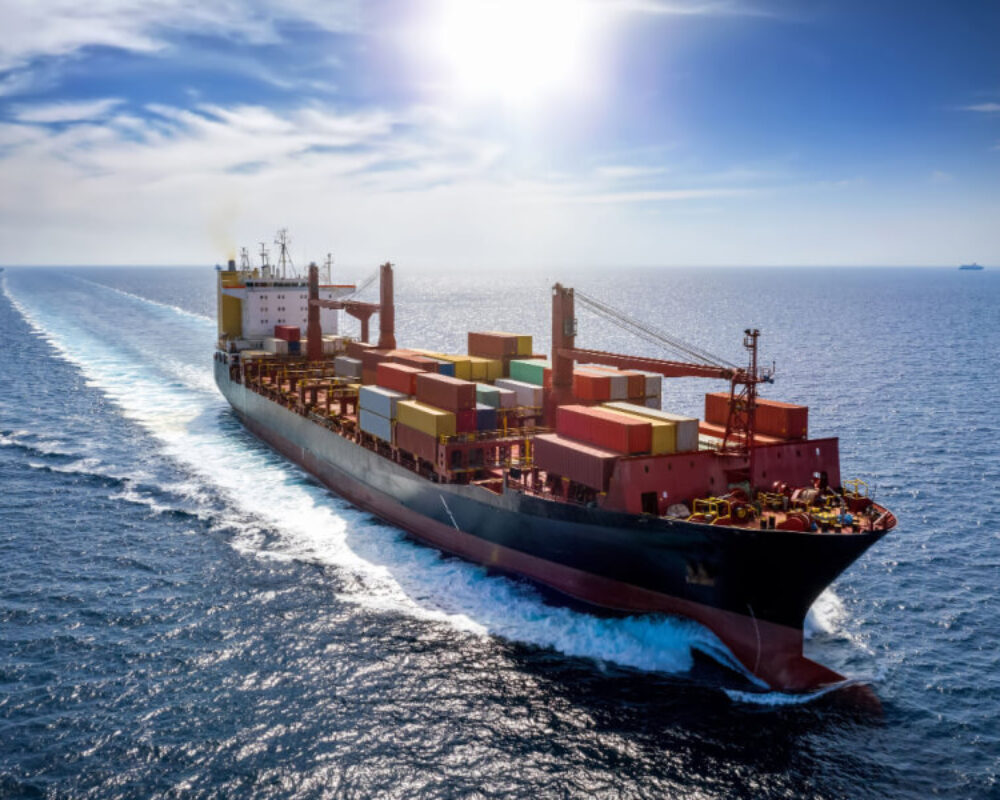Navigating the labyrinth of sea freight shipping documentation can be daunting, especially for those new to the world of international trade.
This guide serves as an essential tool to simplify this complex process. We aim to provide you with a comprehensive understanding of various forms, certificates, and declarations crucial in ensuring your goods reach their destination smoothly.
Bill of Lading (B/L)
The Bill of Lading (B/L) is indispensable in sea freight shipping. It serves multiple functions, each integral to the smooth operation of international trade. The B/L is not just a piece of paper; it’s a legally binding document that safeguards the interests of the shipper, the carrier, and the consignee.
Roles of B/L
The Bill of Lading wears many hats in the shipping process. Its roles are diverse and critical to the successful execution of sea freight shipping.
Acts as Proof of Receipt for the Cargo
Once the cargo has been put into the vessel, the carrier issues a B/L as a receipt. This receipt is not merely an acknowledgement of the cargo’s existence; it details the goods’ nature, quantity, and condition. It’s a crucial document that confirms the carrier has received the goods in an acceptable state and is now responsible for their safe delivery.
Serves as Evidence for the Contract of Carriage
The B/L also functions as evidence of the contract of carriage. It doesn’t constitute the contract itself but serves as proof that such an agreement exists between the shipper and the carrier. The terms and conditions of the contract are typically printed on the reverse side of the B/L, providing a reference point for any potential disputes or clarifications.
Functions as a Document of Title to the Goods
In shipping, possession of the B/L often equates to ownership of the goods. The B/L is a negotiable document, meaning it can be endorsed and transferred, effectively changing the cargo ownership it represents. This feature is particularly useful in transactions involving Letters of Credit, where the B/L ensures payment upon proof of shipment.
Types of B/L
The Bill of Lading is not a one-size-fits-all document. There are several types of B/Ls, each tailored to specific circumstances and requirements of the shipping process.
Straight, Order, and Seaway are Among the Different Types of B/L
The Straight Bill of Lading is non-negotiable and is used when the goods have been paid for or do not require payment. The Order Bill of Lading is negotiable, allowing the transfer of ownership of goods during transit through endorsement. On the other hand, the Seaway Bill of Lading is a non-negotiable document issued for direct delivery to the consignee, typically used when the consignee and the shipper have a high level of trust.
Each Type is Used Under Specific Circumstances
The type of B/L used depends on the nature of the transaction, the relationship between the shipper and the consignee, and the specific requirements of the shipping process. For instance, an Order B/L might be used in a transaction involving a Letter of Credit, while a Seaway B/L could be used for expedited shipments where the transfer of a physical document could cause delays.
The Bill of Lading is a cornerstone of sea freight shipping. Its roles extend beyond being a mere receipt to being a crucial legal document that facilitates international trade. Understanding its functions and the different types available is essential for anyone involved in shipping.
As we navigate the complex world of sea freight shipping, the B/L serves as a compass, guiding us through the intricate maze of documentation and legalities.
Commercial Invoice
The commercial invoice, a cornerstone of international trade, is a document that encapsulates the essence of a transaction. It is a testament to the agreement between the buyer and the seller, detailing the goods and their value.
Purpose of Commercial Invoice
The commercial invoice is a comprehensive transaction record detailing the parties involved. The goods traded and the agreed price. The document speaks volumes about the transaction, providing a snapshot of the deal. The details about the seller and the buyer, along with a thorough description of the goods and their price, are all encapsulated within this document.
Customs authorities utilise the commercial invoice to determine the duties and taxes applicable to the goods. It is, therefore, a document of paramount importance in international trade.
Seller and Buyer Details
The commercial invoice records the parties involved in the transaction. It includes the seller’s and buyer’s names, addresses, and contact information, ensuring transparency and accountability in the transaction.
Description of Goods and Price
The commercial invoice includes a detailed description of the goods being traded. This consists of the type of goods, quantity, price per unit, and total price. This detailed account ensures that both parties clearly understand the transaction’s specifics.
Role in Customs
Customs authorities use the commercial invoice to determine the duties and taxes applicable to the goods. The value of the goods, as stated in the invoice, serves as the basis for these calculations. This makes the commercial invoice a crucial document in the customs clearance process.
Creating a Commercial Invoice
The responsibility of creating a commercial invoice falls on the seller. They must ensure the document is accurate, detailed, and reflective of the transaction. The commercial invoice should contain precise information about the goods, including their description, quantity, and price.
Seller’s Responsibility
As the creator of the commercial invoice, the seller must ensure that all information is accurate and complete. This includes the details of the buyer and seller, the description of the goods, and the price. Any inaccuracies can lead to complications in customs clearance and potential legal issues.
Detailed Information about the Goods
The commercial invoice should contain a detailed description of the goods. This includes the type of goods, quantity, price per unit, and total price. The seller must ensure this information is accurate and reflects the goods being traded.
The commercial invoice is a vital document in international trade, serving as a comprehensive record of the transaction and a crucial tool in customs clearance. As the commercial invoice’s creator, the seller must ensure its accuracy and completeness.
By doing so, they can facilitate a smooth and efficient trade process, ensuring their goods reach their destination without any unnecessary complications.
Packing List
A packing list, also known as a shipping list or a packing slip, is an essential document in the world of sea freight shipping. It provides detailed information about the specific goods in a shipment, guiding all parties involved in the shipping process.
Contents of Packing List
The packing list is a comprehensive document containing specific shipment details. It includes the package count, measurements, weight, and item description. These details are crucial in identifying individual items within the shipment, ensuring that all goods are accounted for.
Package Count
The package count refers to the total number of packages in the shipment. Depending on the shipment size, this could range from a single package to hundreds.
Measurements
The measurements of each package are also included in the packing list. This information is essential for planning the loading and unloading process and calculating the total volume of the shipment.
Weight
The weight of each package is another crucial detail included in the packing list. This information is used to determine the total weight of the shipment, which is a critical factor in calculating shipping costs.
Item Description
The item description provides a detailed overview of the goods contained in each package. This includes the goods’ type, quantity, and other relevant details.
The Usefulness of a Packing List
The packing list plays a vital role in the sea freight shipping process. Shippers, carriers, and receivers use it throughout shipping, ensuring all goods are accounted for correctly. Furthermore, it assists customs authorities in checking the cargo, facilitating a smoother customs clearance process.
Use by Shippers, Carriers, and Receivers
Shippers use the packing list to ensure all goods have been correctly packed and accounted for. Carriers use it to plan the loading and unloading process, and receivers use it to verify that all goods have been received in the correct quantity and condition.
Assisting Customs Authorities
The packing list is also a crucial document for customs authorities. It provides them with detailed information about the shipment, allowing them to verify the contents of the cargo and ensure that all goods comply with import and export regulations.
The packing list is indispensable in the sea freight shipping process. It provides detailed information about the shipment, assists in identifying individual items, and facilitates a smoother customs clearance process.
Shippers can ensure a more efficient and hassle-free shipping process by understanding the contents and usefulness of a packing list.
Certificate of Origin
The Certificate of Origin documents certify the country where the goods were manufactured. It is a crucial piece of documentation in international trade, serving as a testament to the origin of the goods being exported.
This document is typically issued by a Chamber of Commerce or another designated authority, providing proof of the goods’ origin.
Importance of Certificate of Origin
The Certificate of Origin (CO) plays a pivotal role in international trade. It is a document and a passport for goods crossing international borders. The CO’s importance lies in its ability to determine the tariff treatment of the goods and its requirement for customs clearance.
- Determines the Tariff Treatment of the Goods: Customs officials in the importing nation use the information on the CO to determine if the commodity is acceptable for entrance. It also helps establish if the products are eligible for special treatment under trade agreements between the importer and the nation of origin. If a trade embargo or other restrictions are in effect, the information on the CO will decide the level of tariff that will be applied to the products and, in some cases, whether or not the importation of the commodities is permitted.
- It May Be Required for Customs Clearance: Besides determining tariff treatment, the CO is often a mandatory requirement for customs clearance. Without it, goods may be held at customs, causing delays and potential financial loss.
Issuing a Certificate of Origin
The process of issuing a Certificate of Origin is meticulous, ensuring the authenticity and accuracy of the information provided.
- Usually Issued by a Chamber of Commerce or Other Designated Authority: The responsibility of issuing a CO typically falls on the exporter or manufacturer. Some COs must be countersigned and stamped by an authorised third party to be valid. This ensures the credibility of the information provided in the document.
- Provides Proof of the Goods’ Origin: The declaration of origin for the exporter is contained in the CO. The CO may not always include information on the exporter’s country of origin. It is vital to remember this. Some certifications list the location of the product’s manufacturing. While it’s typical for the country of origin and the exporter to coincide, it’s not always the case.
The Certificate of Origin is an indispensable document in the world of international trade. It serves as a testament to the origin of goods, influences tariff treatments, and is often a requirement for customs clearance.
As such, understanding its importance and issuance process is vital for anyone involved in exporting and importing goods.
Shipper’s Letter of Instruction (SLI)
The Shipper’s Letter of Instruction (SLI) is a pivotal document in international trade. It serves as a comprehensive guide for the freight forwarder or carrier, outlining the specific requirements and instructions from the exporter.
This document is the cornerstone of a successful shipping process, ensuring all parties understand their roles and responsibilities clearly.
Details in an SLI
The SLI is a treasure trove of information detailing every aspect of the shipping process. It specifies the type of transport to be used, the destination of the goods, and any special instructions that need to be followed.
Furthermore, it includes crucial payment-related information, ensuring that all financial aspects of the transaction are transparent and agreed upon. Lastly, it contains the contact information for all parties involved in the shipment, facilitating smooth communication and coordination throughout the shipping process.
Type of Transport and Destination
The SLI clearly outlines the mode of transportation to be used, whether it’s air, ocean, or rail. It also specifies the origin and ultimate destination of the cargo, providing a clear roadmap for the freight forwarder.
Payment-Related Information
The SLI includes details about who is responsible for the freight payment, whether prepaid by the exporter or collected from the foreign buyer. This clarity helps avoid any financial misunderstandings or disputes.
Contact Information
The SLI contains the contact details of all parties involved in the transaction, including the exporter and consignee. This information is vital for maintaining open lines of communication throughout the shipping process.
Role of the SLI
The SLI plays a pivotal role in ensuring the shipping process goes smoothly. It serves as a guide for the freight forwarder, providing all the necessary information to handle the shipment correctly.
Eliminating guesswork and assumptions helps avoid misunderstandings and errors in the shipping process. Furthermore, the SLI is a legal document that authorises the freight forwarder to act on the exporter’s behalf, giving them the authority to handle customs procedures and export control.
Ensuring Smooth Shipping Process
The SLI contains all shipping information, from pickup to delivery. This comprehensive document makes it easier for the carrier to process the shipment, ensuring smooth and efficient shipping.
Avoiding Misunderstandings and Errors
By giving the carrier a thorough letter of instructions, the shipper can establish that all of the cargo’s requirements, specifications, and special needs have been communicated to the recipient. This lessens the chance of miscommunications or mistakes that could delay shipments.
Legal Authorisation
In some countries, the SLI is considered a one-time power of attorney, authorising the freight forwarder to act on the exporter’s behalf. This legal authorisation empowers the forwarder to handle customs procedures and export control, ensuring that all legal requirements are met.
Filling Out an SLI
Filling out an SLI accurately is paramount to avoid any miscommunication or errors. The exporter or party responsible for export control and customs reporting should complete it, ensuring that all correct data and instructions are passed directly to the carrier.
In the modern digital age, the SLI can be submitted electronically, saving time and reducing the likelihood of errors.
Accuracy is Key
The SLI must be filled out accurately to ensure all the necessary information is communicated to the freight forwarder. Any inaccuracies can lead to misunderstandings, delays, or even legal issues.
Responsibility of the Exporter
The responsibility of filling out the SLI lies with the exporter or the party responsible for export control and customs reporting. By taking on this responsibility, the exporter can ensure their cargo is handled and stored correctly during transit.
Electronic Submission
To save time and reduce errors, the SLI can be submitted electronically. This speeds up the process and ensures the document is easily accessible and quickly shared with all parties.
The Shipper’s Letter of Instruction is an indispensable tool in international trade. It serves as a comprehensive guide for freight forwarders, ensuring that all aspects of the shipping process are clearly outlined and understood.
By filling out the SLI accurately and thoroughly, exporters can ensure a smooth and efficient shipping process, paving the way for their goods to reach their destination without any hitches.
Import/Export Declarations
Import and export declarations are pivotal documents in the realm of international trade. They serve as official records detailing the specifics of goods transported across borders. These records are essential for ensuring the seamless movement of products, preserving the integrity of global commerce, and following the rules established by customs authorities.
Purpose of these Declarations
The purpose of import and export declarations extends beyond mere documentation. They are instrumental in facilitating, controlling and managing goods movement across borders. Customs authorities rely on these declarations to calculate customs duties and taxes, ensuring the correct levies are applied to each shipment.
Furthermore, these documents assist in compiling official trade statistics, providing valuable insights into the dynamics of international trade.
Filing the Declarations
Filing import and export declarations is usually undertaken by the importer, exporter, or customs broker. The accuracy of these documents is paramount, as any discrepancies can lead to penalties or delays in shipment.
These declarations can now be filled out electronically to enhance efficiency and accuracy, a practice that has become increasingly prevalent in the UK since 2021.
Understanding Customs Codes
A critical aspect of import and export declarations is correctly classifying each item using the Harmonised System (HS) code.
The classification of traded goods is done using this globally recognised system of names and numbers, and the correct HS code determines the amount of duty that must be paid. Serious repercussions, such as penalties, holdups, or even the confiscation of goods, might result from misclassification.
Understanding and correctly utilising import and export declarations is essential to international trade. When accurately filled out and properly managed, these documents can facilitate the smooth flow of goods across borders, ensure the correct calculation of duties and taxes, and contribute to the overall efficiency of global trade. As such, they are an indispensable tool in sea freight shipping.
Insurance Certificate
An insurance certificate is a vital document in sea freight shipping. It is tangible proof that your goods are safeguarded against potential loss or damage during transit. This document is not merely a piece of paper but a guarantee that your investment and business interests are protected.
Importance of an Insurance Certificate
The importance of an insurance certificate in sea freight shipping cannot be overstated. Knowing that your goods are protected throughout their journey provides peace of mind. This assurance is psychological and financial, as it safeguards your investment against unforeseen incidents.
Buyers require an insurance certificate in many CIF (Cost, Insurance, and Freight) transactions, making it a crucial element in international trade. Moreover, an insurance certificate may be necessary to claim compensation for loss or damage. Thus, it is a safety net, ensuring your business can recover from potential setbacks.
Obtaining an Insurance Certificate
Obtaining an insurance certificate is a straightforward process involving an insurance company or agent. However, it’s important to note that the type and extent of coverage can vary significantly. Therefore, understanding the terms of your insurance policy is crucial to ensure that it meets your specific needs.
The cost of insurance should also be factored into the overall shipping costs. It’s not an extraneous expense but an integral part of doing business safely and responsibly. As the saying goes, “It’s better to be safe than sorry,” this is particularly true in the unpredictable world of sea freight shipping.
Making a Claim
You must contact the insurance provider immediately if your products are lost or damaged. Timely action can speed up the claim procedure and raise the probability of a successful outcome.
The claim process requires all necessary documentation, including the insurance certificate and evidence of loss or damage. It’s essential to keep all relevant paperwork to substantiate your claim. The claim process and timeline can vary depending on the insurance company and the policy terms. Therefore, understanding your policy’s claim process is crucial to effectively navigating this potentially stressful situation.
An insurance certificate plays a pivotal role in sea freight shipping. It provides financial protection and contributes to the smooth operation of international trade. By understanding its importance, how to obtain it, and the claim process, you can ensure that your business is well-prepared for the uncertainties of sea freight shipping.
Conclusion
In conclusion, understanding and managing sea freight shipping documentation is critical for smooth international trade transactions. It’s a process that requires precision, attention to detail, and an understanding of international customs and practices.
If you need further assistance, don’t hesitate to contact us.



